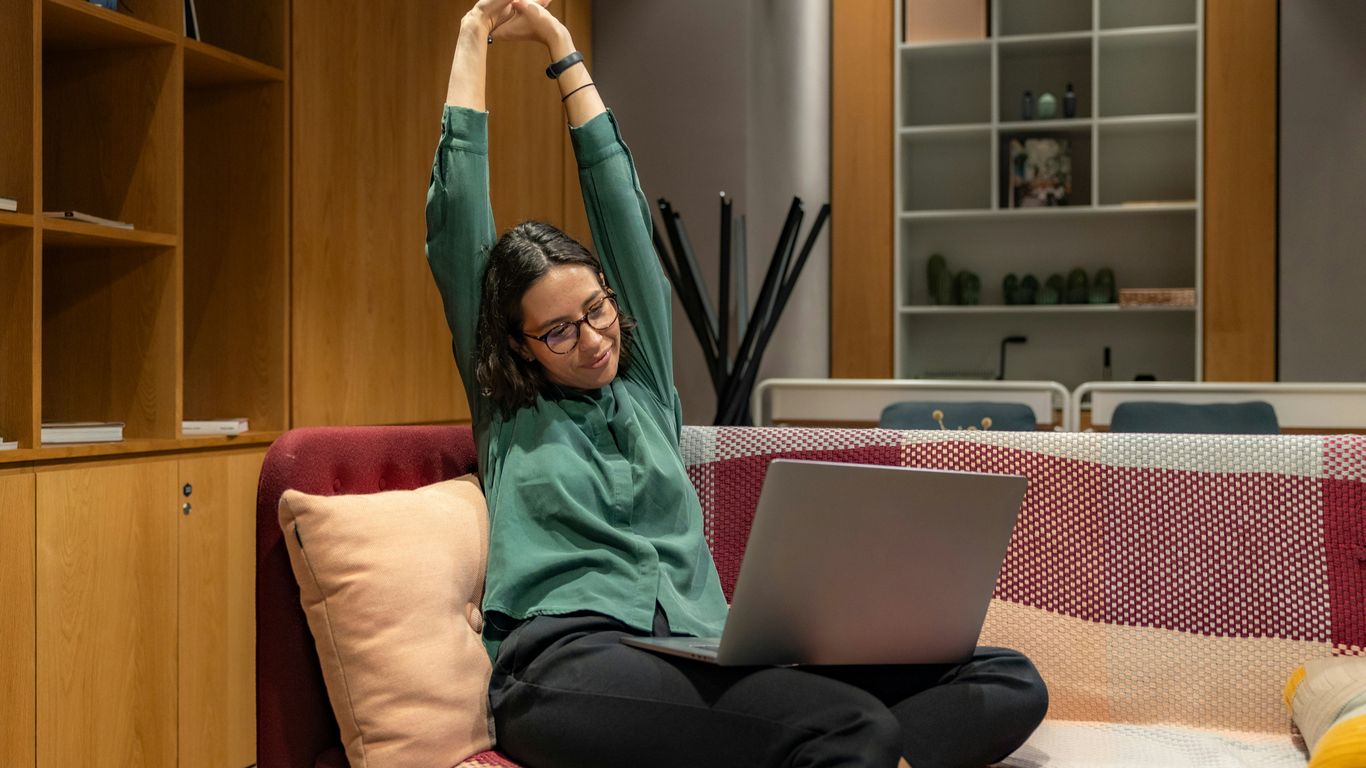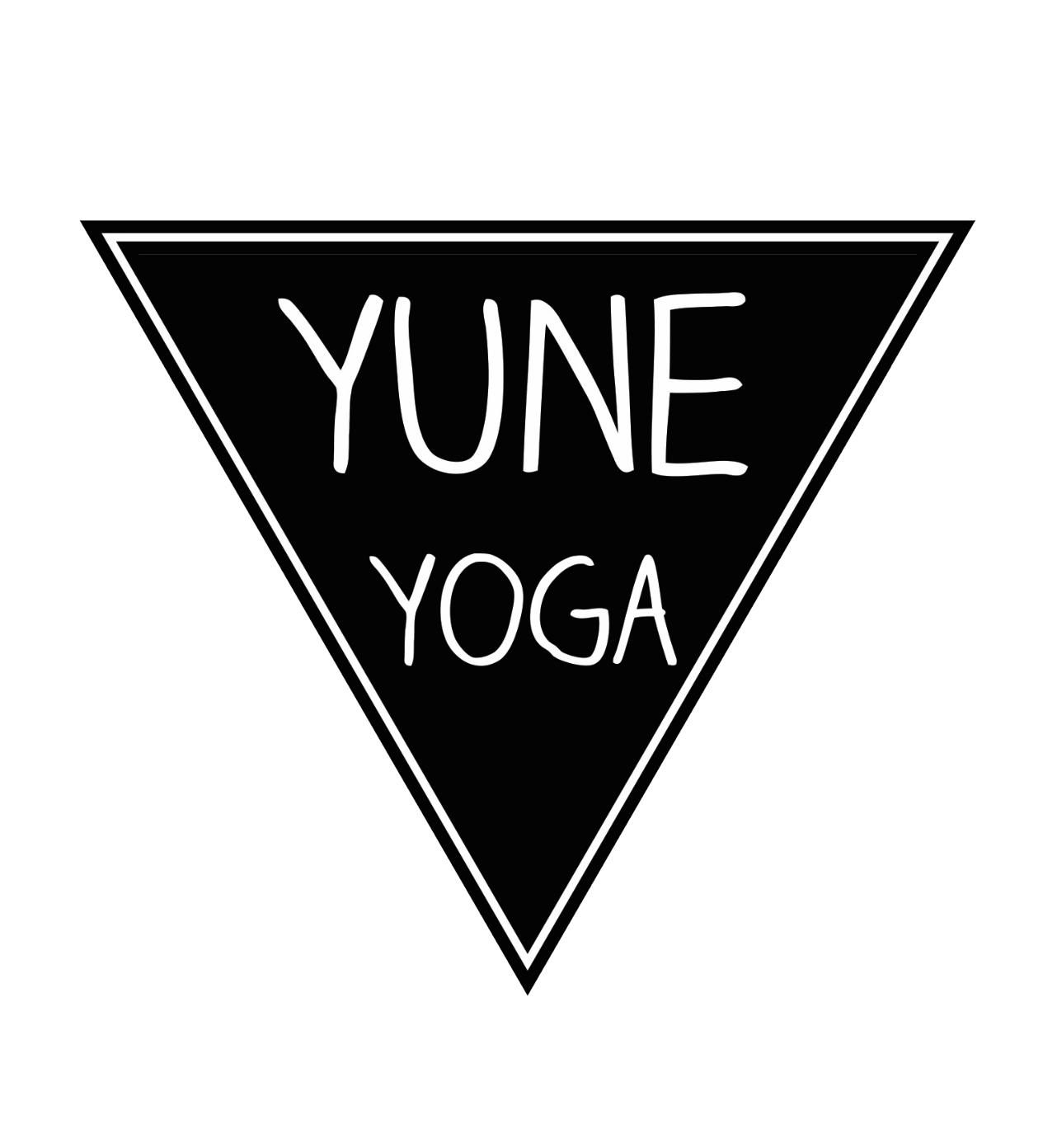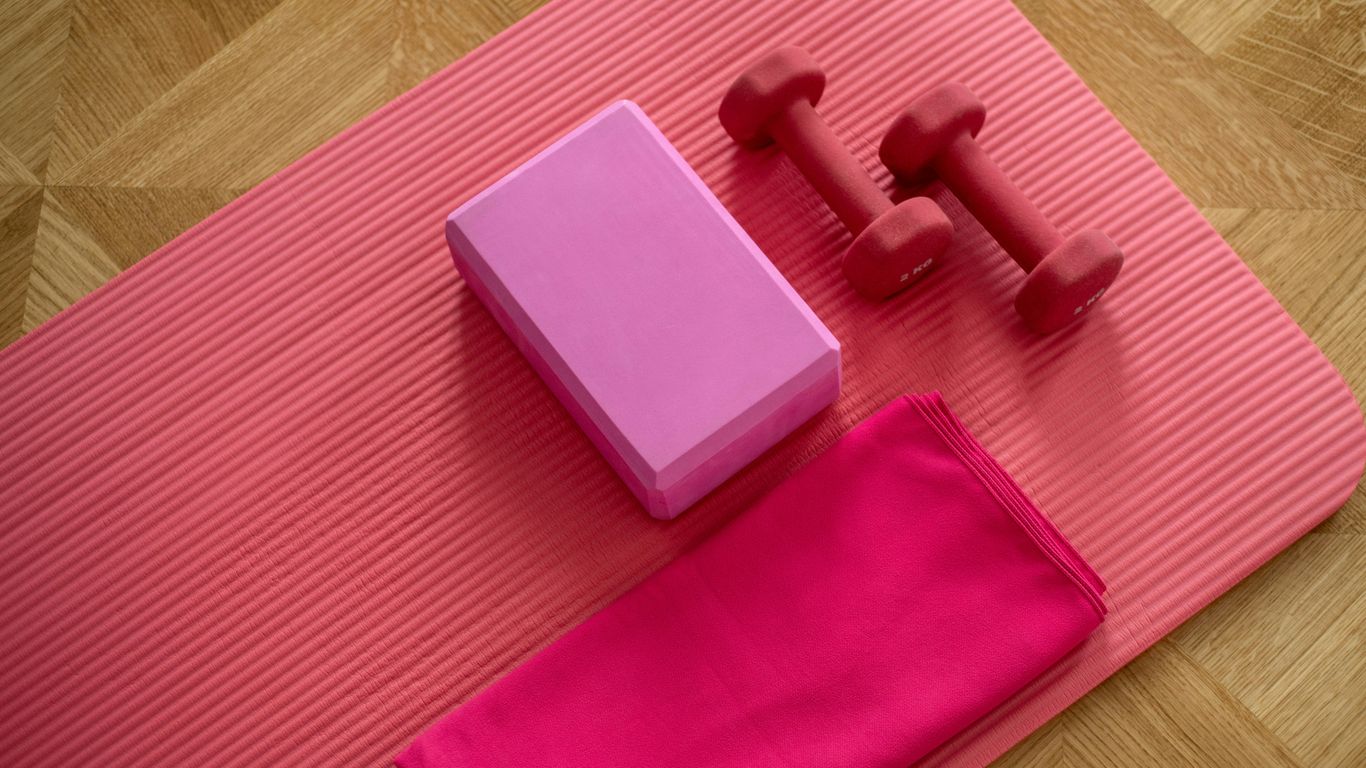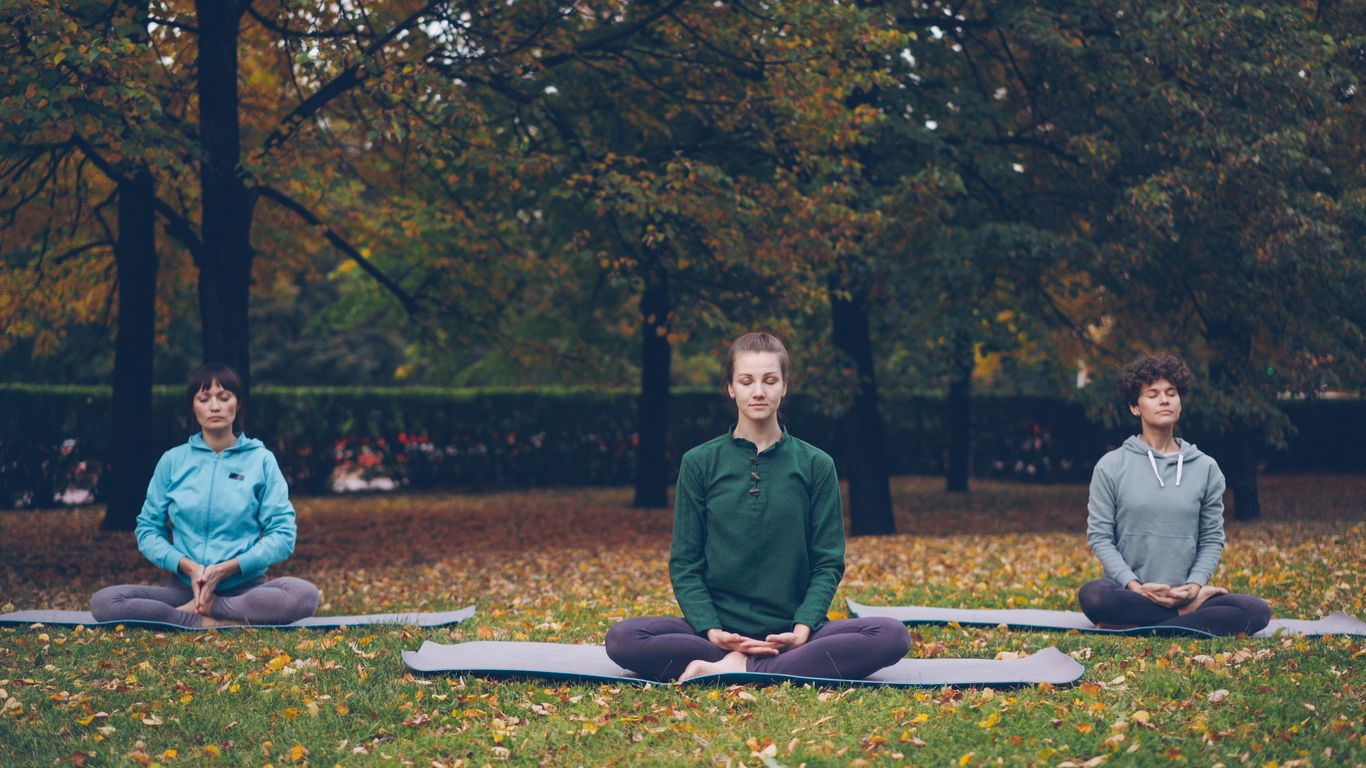
Free Yoga for Seniors: Safe and Simple Routines You Can Start Today
Getting older doesn’t mean you have to stop moving or give up on feeling good in your body. Free yoga for seniors is an easy way to stay active, loosen up stiff joints, and even boost your mood—all without spending a dime. You don’t need to be flexible or have fancy gear. In fact, most routines can be done right from your living room, and even from a chair if standing is tough. If you’re looking for a new way to stay healthy and relaxed, these simple yoga routines are a great place to start.
Key Takeaways
- Free yoga for seniors is a gentle way to improve flexibility, balance, and strength at any age.
- Chair yoga makes it possible for everyone, even those with limited mobility, to enjoy the benefits of yoga.
- You don’t need special equipment—just a sturdy chair and a little open space.
- There are plenty of free resources, like apps and YouTube videos, designed just for seniors.
- Building a simple yoga habit at home can help you feel better physically and mentally, one day at a time.
Why Free Yoga for Seniors is the Perfect Way to Stay Active
Staying active definitely gets trickier as the years go by, but you don’t have to run a marathon to feel good. Yoga stands out because it’s gentle, flexible to your needs, and can usually be done for free at home or in a group. Free yoga is one of the simplest ways for seniors to add movement to every day, without stress or heavy equipment.
Benefits for Flexibility and Mobility
- Boosts range of motion in stiff joints, making everyday tasks easier
- Stretching and movement help loosen muscles that get tight from sitting
- Many yoga routines are specifically designed for older adults, with adjustments to suit every ability
- Can even help reduce the risk of falling by improving balance and body awareness
If flexibility is a worry, little by little, regular yoga helps seniors become more confident—walking farther, reaching higher, and moving with less discomfort.
Mental Wellness and Stress Relief
- Simple breathing and movement calm the mind
- Yoga is a proven way to reduce anxiety and boost mood
- Connecting breath to gentle motion helps quiet racing thoughts, especially for those living alone
A quiet moment on the mat, focusing on slow breaths or even holding a simple stretch, can sometimes be the best part of a long day. It’s not just your body that benefits, but your peace of mind, too.
Safety Considerations for Seniors
No one wants to get hurt trying to get healthy. Here are some tips for practicing yoga safely:
- Listen to your body and never force a stretch
- Have a sturdy chair or wall nearby for extra support
- Wear clothes that let you move freely and won’t trip you up
- Use a non-slip base, like the Antonio Yoga Mat, to help prevent slips—especially for standing or floor poses
And remember: you don’t need to be flexible to start yoga. Go slow, rest as needed, and enjoy the practice at your own pace. That’s the beauty of yoga for seniors—it's all about feeling better, not pushing through pain.
How to Get Started with Free Yoga for Seniors at Home
Necessary Equipment and Space
Finding the right space and simple equipment makes a big difference when starting yoga at home. You don’t need to buy anything fancy to get going. A sturdy chair (without wheels), comfortable clothes, and perhaps a soft surface are all you’ll need for most routines. For those who want more comfort on the floor, a supportive mat like the Yoga Mat 6mm Non-Slip Orange offers extra grip and cushion without being too bulky.
- Sturdy chair: Make sure it doesn’t have wheels.
- Flat, clear floor space: Enough to stretch arms and legs safely.
- Optional: Yoga mat for extra support, especially if you plan to try floor poses.
- Comfortable, loose-fitting clothes.
The best yoga space is one you can use every day, even if it’s just a cleared-out patch of living room.
Tips for Creating a Safe Environment
Before you begin, look around your space. Remove anything you could trip on—think rugs, pets' toys, or loose shoes. If you need support, position your chair near a wall or steady table. Good lighting helps prevent accidents and keeps you alert. Proper ventilation can help you feel more comfortable during your yoga practice, too.
Here’s a list of safe setup tips:
- Clear the area—no clutter on the floor.
- Place your chair on a non-slip surface (mat or carpet).
- Keep water within easy reach.
- Make sure your phone or tablet is propped up at eye level if you’ll follow a video.
Setting Realistic Expectations
Starting a new habit takes time. Progress in yoga—especially for seniors—happens gradually, and that’s perfectly normal. You might not touch your toes on day one, but gentle effort is what matters. Aim to set small, achievable goals: maybe five minutes a day to begin, then add more time if it feels right.
Table: Sample Weekly Beginner Yoga Plan
| Day | Activity | Time |
|---|---|---|
| Monday | Gentle stretch routine | 5 minutes |
| Wednesday | Chair yoga for beginners | 8 minutes |
| Friday | Breathing and meditation | 10 minutes |
If you skip a day or two, don’t worry. Just start again when you can. In the end, building a steady routine at your own pace is the secret to feeling stronger, more mobile, and relaxed at home.
Simple Chair Yoga Routines for All Abilities
Chair yoga is a friendly way for anyone—especially seniors—to stay active, stretch, and gain a bit more comfort and movement. No need to get up and down off the floor or twist yourself into a pretzel. If you have a sturdy chair, you already have almost everything you need.
These routines are designed to be gentle and safe. You don’t need any fancy equipment—just a chair and comfortable clothes. Here are three routines you can try to bring more ease and flexibility to your day.
Seated Forward Bend for Lower Back Release
This simple move can help ease lower back tightness while keeping you safely supported.
- Sit up straight at the edge of your chair with both feet flat on the ground.
- Take a gentle inhale, and as you exhale, lean forward, letting your arms rest on your thighs, shins, or the floor (whatever is comfortable).
- Relax your neck and stay here for 3–5 slow breaths, then slowly roll back up to sitting.
- Don’t force yourself to go further than feels ok.
- Let your head and shoulders stay loose when you fold forward.
- This can really help if you’ve been sitting for a while and your back feels stiff.
Many people are surprised how much relief this simple forward bend brings to their everyday aches and pains.
Gentle Cat-Cow Movements for Spinal Mobility
Waking up your spine can make everything from reaching for a shelf to turning around in the car feel a little easier. Here’s how to do it right in your chair:
- Slide to the center of your seat, again with feet flat.
- Place your hands on your knees.
- Inhale, arch your back and look slightly upward (chest forward).
- Exhale, round your back and gently tuck your chin to your chest.
- Repeat this back-and-forth motion for 5–8 breaths.
- Move at your own pace—don’t rush.
- Feel free to keep the range of movement small if you like.
- If your shoulders or neck feel tight, only move within a comfortable range.
If you’re curious about caring for your mat or want to see which type might add comfort to your routine, the Jane Yoga Mat 6mm Blue Non-Slip is worth a look.
Leg Lifts and Ankle Circles for Improved Circulation
Keeping blood moving in your lower legs can really make a difference, especially if you tend to sit for a good part of the day. This is sometimes a favorite for those with limited mobility.
- Sit upright with good posture and feet flat.
- Lift your right leg out in front of you, keeping your knee straight or slightly bent.
- While holding your leg up, make small circles with your ankle – 5 in each direction.
- Gently lower the leg and repeat on the other side.
- If you’re up for it, try lifting both legs together for a few seconds for an extra challenge.
- If you feel any discomfort, keep your foot closer to the floor.
- This can help reduce swelling, prevent stiffness, and even make standing up feel easier.
| Routine | Main Focus | Recommended Reps |
|---|---|---|
| Seated Forward Bend | Low back and hips | 3–5 breaths |
| Cat-Cow Movements | Spine flexibility and posture | 5–8 times |
| Leg Lifts & Ankle Circles | Leg strength and circulation | 5 circles/leg |
For all these routines, remember: move slowly, breathe deeply, and listen to your body. Even just a few minutes can refresh both your body and your mind. If you stick with it and adjust the moves for your body, chair yoga can bring little wins every week. That’s worth celebrating, no matter your age.
Free Yoga Resources and Apps Seniors Will Love
Looking for reliable, easy-to-use yoga resources can be a hassle, especially if you’re not sure where to begin. Good news: there’s a wide range of free tools and guides made just for seniors, no matter your ability or comfort level.
Best Free Chair Yoga Apps and Guides
Getting started often feels confusing—there are countless apps out there. The best ones for seniors put ease first with simple interfaces, clear instructions, and routines tailored to people with limited mobility. Here’s a quick look at some popular options:
| App Name | Features | Why Seniors Like It |
|---|---|---|
| Yoga for Seniors Free | Slow-paced, guided videos, no login needed | Easy to use, short sessions |
| Chair Yoga for Seniors | Mindfulness add-ons, warm-ups/cool-downs | Big buttons, captions, senior design |
| Daily Yoga | Seated yoga options, community support | Categories like “back pain relief” |
| Seniors Chair Yoga | Daily new routines, group friendly | No account, easy on big screens |
| Stretch & Flex | Focus on functional movement, light stretches | Designed for ages 60+ |
Trusted YouTube Channels for Seniors
Not a fan of apps? YouTube might be your perfect fit. Some channels make yoga fun and very accessible, plus they’re all free. A few worth checking out:
- Yoga with Adriene – "Yoga for Seniors" playlists, relaxing and clear
- Eldergym® Senior Fitness – short, chair-based routines led by a senior fitness coach
- Yes2Next – mother-daughter team who do gentle standing and seated yoga
All you need is a smartphone, TV, or computer—no extra equipment needed.
Printable Yoga Routines and Challenges
If screens aren’t your thing, a printable routine is handy to have nearby. Several organizations and blogs offer free PDFs with illustrated yoga poses and step-by-step instructions. Here’s why printables work:
- You can keep them next to your favorite chair for quick access
- Easy to share with a friend or bring to a group class
- Great for tracking progress with pen and paper
Even on tough days, having just one routine printed out or cued up on your tablet can make it much easier to stick with your practice. Baby steps add up before you even notice.
Don’t feel pressured to use every resource at once. Try one or two and see what fits your style best—consistency matters more than anything else.
Essential Yoga Poses for Seniors to Try Today
Getting started with yoga in your senior years doesn't need to be complicated. In fact, these easy poses can make a huge difference in daily comfort and movement. With just a few basic moves, you’ll help build balance, back strength, and feel more relaxed overall. Even just a few minutes a day makes a real impact.
Mountain and Tree Pose for Balance
Balance can become trickier as we get older, but these two standing poses are straightforward and effective:
- Mountain Pose: Stand with feet together, shoulders relaxed, and arms at your sides. Tighten your legs gently. Lift your chest and keep a gentle bend in the knees. Take a few slow breaths here, focusing on standing tall.
- Tree Pose: From Mountain, shift weight onto the left foot, placing the right foot on your left ankle or calf (avoid the knee). Hands can come together in front of your chest. Breathe and hold for a few cycles, then switch sides.
- These poses help train your balance and can be practiced using a sturdy chair or wall for support if needed.
Many older adults feel unsteady about trying standing poses. Starting with support and taking it slow keeps the risk low and helps build confidence day by day.
Sphinx and Bird Dog for Back Strength
A strong back helps with posture and makes everyday activities easier. These poses are gentle but effective:
- Sphinx: Lie on your belly with forearms on the floor, elbows under shoulders. Press lightly down, lifting your chest. You'll feel a gentle stretch in your upper and lower back. Breathe for several cycles, then relax.
- Bird Dog: Begin on hands and knees. Reach your right arm forward and your left leg back, holding for a few breaths, then switch sides. Keep the abdomen engaged the whole time.
- Consistency is key—doing these regularly has lasting impact.
Comparison Table: Back Strength and Balance Poses
| Pose | Focus Area | Suggested Time/Breaths |
|---|---|---|
| Mountain | Balance/Posture | 5-8 breaths |
| Tree | Balance/Core | 3-5 breaths per side |
| Sphinx | Upper Back/Spine | 5-8 breaths |
| Bird Dog | Lower Back/Core | 3-5 cycles per side |
For best results, it’s helpful to have a supportive surface, like a sturdy, comfortable yoga mat, especially if you’re trying a pose lying down.
Cobbler’s Pose and Savasana for Relaxation
Finishing a yoga session with gentle stretches is calming for both body and mind:
- Cobbler’s Pose: Sit on the floor, bring the soles of your feet together, and let your knees fall to the sides. Hold your feet and sit up tall. For a stretch, fold forward slightly.
- Savasana: Lie back and let your arms and legs fall open, relaxing every muscle. Focus on your breath—no effort required.
- These poses help the nervous system unwind and give the mind a rest.
After even a short routine, taking time for deep relaxation can be just as important as the poses themselves, letting the body recharge and recover.
Try these moves regularly, adjusting as needed. Remember: go slow and listen to your body. With practice, these simple yoga poses will help you feel steadier, stronger, and more at ease.
Adapting Yoga for Various Mobility Levels
As we get older, everyone’s body responds differently to movement. Some people might stand and move around with no trouble, while others need a little support or prefer to stay seated. The best part? Yoga can be modified to fit just about any level of mobility, so almost everyone can join in at some level. It's all about adjusting the poses and routine to what feels safe and comfortable for you.
Chair Yoga for Limited Mobility
Chair yoga is a simple way to exercise if getting up and down from the floor isn’t easy. If your joints feel stiff or you’re recovering from something, you can still stretch and strengthen your muscles.
- Do most of the poses sitting in a sturdy chair with your feet flat on the floor.
- Movements focus on arms, legs, and gentle back twists.
- You don’t need special gear. Honestly, even your living room chair will do.
Check out an easy overview on adaptable ways seniors can boost mobility with chair yoga. For folks who sometimes feel wobbly or tired, chair yoga is not just gentle—it’s safe.
Standing Poses with Support
For those who like a bit more of a challenge but still want stability, using a wall or the back of a chair can help. Balancing can be tricky, and nobody wants to risk a fall.
- Keep a hand on a stable surface for extra confidence when trying standing poses.
- Simple moves, like standing side stretches or gentle lunges, are perfect to do with this support.
- Gradually, you might notice better balance and more muscle strength.
Breathing Techniques for Relaxation
Even if physical movement feels out of reach some days, you can still get the calming effects of yoga with breathwork. A few minutes of focused breathing can ease tension and clear your mind.
- Sit or lie comfortably, close your eyes, and pay attention to your breath.
- Try slow, deep inhales through the nose, hold for a moment, then exhale slowly.
- Repeat for a few rounds. That’s it—no rush, just you and your breath.
You don’t need to keep up with anyone else or do things a certain way. Every day is different, so listen to what your body is saying and treat yourself kindly.
Table: Easy Yoga Options by Mobility Level
| Mobility Level | Sample Yoga Option | Support Needed |
|---|---|---|
| Limited (Seated Only) | Chair yoga (seated) | Sturdy chair |
| Moderate | Wall/chair-supported poses | Wall or chair |
| Higher | Light standing/yoga mat | Mat (optional) |
Yoga is about small improvements—whether it’s moving a little farther or simply pausing to breathe. Start at your comfort level and let the practice work for you, not the other way around.
Building Consistency: Tips for Making Free Yoga a Habit

Trying to stick with a new routine—especially something like yoga—can be a real challenge. Motivation comes and goes, schedules get busy, and let’s be honest, sometimes the couch just looks too inviting. Still, small changes done regularly add up, and there are a few practical ways to make your yoga sessions part of your everyday life. Consistency is what turns a one-off session into a lifelong habit that supports your health and wellbeing.
Daily Reminders and Accountability
- Set an alarm or recurring calendar reminder for your preferred yoga time each day.
- Leave your yoga chair or mat set up in a visible spot, so it acts as a cue to practice.
- Ask a family member or friend to check in on your progress, or even join in, boosting motivation for both of you.
- Use a simple chart to mark off each day you complete a session:
Group Sessions and Community Options
- Join a virtual class or local group—sometimes, practicing with others makes it easier to show up.
- Many community centers offer free chair yoga for seniors, which is great for meeting new people and staying on track.
- Consider organizing a regular yoga meet-up with neighbors or friends.
Tracking Progress for Motivation
- Keep a simple journal with notes on each session—write down any benefits you notice, big or small.
- Celebrate personal milestones, whether that’s practicing for seven days straight or managing a new pose.
- Apps and printable trackers can help you visually see your progress and encourage you to keep going.
Missing a day or two isn’t a setback; it’s just part of life. Show up again when you’re able—tiny steps forward matter more than being perfect every single day.
Consistency isn’t about forcing yourself to practice for hours. It’s really about finding little ways to make yoga a natural, regular part of your routine. Even short daily sessions can make a big difference over time.
Wrapping Up: Give Yoga a Try—You Might Be Surprised
So, that’s the scoop on free yoga for seniors. It doesn’t have to be complicated or intimidating—just a few gentle stretches or chair poses can make a real difference. You don’t need fancy gear or a gym membership, either. All you really need is a chair, a little bit of time, and maybe a good video or app to guide you. If you’re worried about starting something new, remember, everyone feels that way at first. Just go at your own pace and listen to your body. The benefits—like better balance, less stiffness, and a calmer mind—are worth it. Give it a shot, and see how you feel after a week or two. Who knows? You might end up looking forward to your daily yoga break. Stay safe, have fun, and keep moving!
Frequently Asked Questions
Is yoga safe for seniors who have never exercised before?
Yes, yoga can be very safe for seniors, even if you’ve never exercised before. It’s important to start with gentle routines and go slowly. Chair yoga and beginner videos are great ways to get started. Always listen to your body and stop if anything hurts.
Do I need special equipment to do yoga at home?
No, you don’t need much to start yoga at home. A sturdy chair without wheels, comfortable clothes, and a little open space are enough. If you’d like, you can use a yoga mat for extra comfort, but it’s not required.
How often should seniors do yoga to see benefits?
Doing yoga just two or three times a week can help you feel more flexible and relaxed. If you enjoy it, you can practice every day. The key is to be consistent and listen to your body’s needs.
What should I do if I have trouble getting up and down from the floor?
If getting up and down is hard, chair yoga is a perfect choice. All the moves are done while sitting or standing with support, so you don’t have to worry about getting on the floor.
Are there free resources or apps that teach yoga for seniors?
Yes! There are many free apps, YouTube channels, and printable guides made just for seniors. These resources offer easy-to-follow routines and tips to help you practice safely at home.
Can yoga help with balance and prevent falls?
Yes, yoga can improve balance, strength, and flexibility, which helps lower the risk of falls. Simple poses like Mountain and Tree pose are especially good for practicing balance in a safe way.


